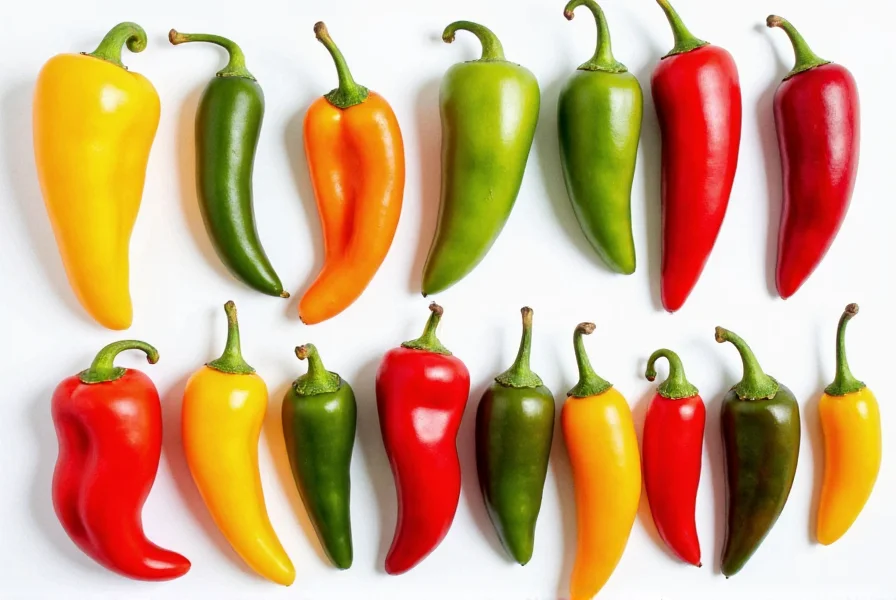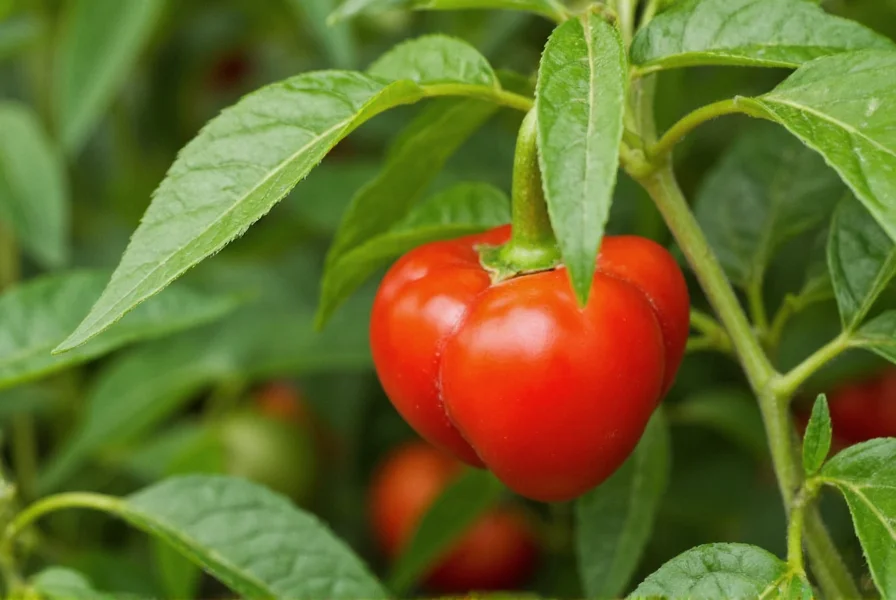Understanding pepper genetics is fundamental to successful breeding. Peppers (genus Capsicum) follow predictable inheritance patterns for many traits. The heat level, determined by capsaicinoid compounds, is controlled by multiple genes but generally follows a dominant-recessive pattern where hot peppers carry dominant alleles. Color inheritance varies by trait—red color in ripe peppers is typically dominant over yellow or orange. Fruit shape and size involve polygenic inheritance, making these traits more complex to stabilize in breeding programs.
The Science Behind Pepper Genetics
Peppers have 12 chromosome pairs (2n=24) and exhibit both simple Mendelian inheritance for some traits and more complex polygenic inheritance for others. The Punnett square remains a valuable tool for predicting outcomes of simple crosses. For example, when crossing a hot pepper (dominant C allele) with a sweet pepper (recessive cc genotype), all F1 offspring will be hot, but the F2 generation will show a 3:1 ratio of hot to sweet peppers.
| Common Pepper Traits | Inheritance Pattern | Stabilization Generations |
|---|---|---|
| Heat level (pungency) | Dominant-recessive with multiple genes | 4-6 generations |
| Ripe fruit color (red vs. yellow) | Dominant-recessive | 3-4 generations |
| Fruit shape | Polygenic (multiple genes) | 5-8 generations |
| Disease resistance | Often single-gene dominant | 3-5 generations |
Practical Pepper Breeding Techniques for Gardeners
Successful home pepper breeding requires careful planning and execution. The first step involves selecting parent plants with complementary traits you wish to combine. For controlled cross-pollination techniques, follow these steps:
- Identify flowers that will serve as the female parent (typically those that haven't opened yet)
- Emasculate these flowers by carefully removing anthers before they release pollen
- Collect pollen from the male parent plant using a small brush
- Apply pollen to the stigma of the emasculated flower
- Label the cross with parent information and date
- Protect the pollinated flower with a small bag to prevent accidental pollination
When working with developing disease-resistant pepper varieties, breeders often introduce resistance genes from wild Capsicum species through complex backcrossing programs. For home gardeners, selecting plants that naturally survive disease outbreaks in your garden provides a simpler approach to improving disease tolerance in your local conditions.
Overcoming Common Breeding Challenges
Pepper breeders face several challenges that require specific strategies:
- Inbreeding depression: Peppers are naturally self-pollinating, which can lead to reduced vigor in subsequent generations. Counter this by maintaining larger population sizes and occasionally introducing new genetic material.
- Unstable traits: Some characteristics may not stabilize until the F4 or F5 generation. Maintain detailed records of each plant's traits across generations.
- Environmental influence: Heat levels and fruit size can vary significantly based on growing conditions. Grow multiple plants of each selection to account for environmental variation.
- Time requirements: Developing a stable variety typically takes 4-8 years. Patience and consistent selection are essential.
Notable Success Stories in Pepper Development
The history of pepper breeding contains remarkable achievements. The 'Trinidad Moruga Scorpion' was developed through selective breeding for extreme heat, while the 'Yolo Wonder' bell pepper series demonstrated how breeders could improve yield and disease resistance in sweet peppers. More recently, the 'Numex Twilight' pepper showcases innovative breeding for ornamental value with its color-changing fruit that progresses from purple to yellow to orange to red.
For those interested in how to breed chili peppers at home, starting with simple crosses between varieties with dramatically different traits (like crossing a sweet bell pepper with a mild jalapeño) provides clear visual results in the F1 and F2 generations. Documenting each cross thoroughly and growing sufficient numbers of offspring (at least 25-50 plants per cross) increases your chances of identifying desirable combinations.

The Future of Pepper Breeding
Modern pepper breeding increasingly incorporates molecular markers to identify desirable genes without waiting for plants to mature. This marker-assisted selection significantly accelerates the development of new varieties with specific traits. Researchers are also exploring gene editing techniques to develop peppers with enhanced nutritional profiles, while traditional breeders continue to create novel flavor combinations and ornamental varieties for home gardeners.
Whether you're a commercial breeder developing the next blockbuster pepper variety or a home gardener experimenting with creating unique pepper hybrids, understanding the fundamentals of pepper genetics and selection techniques provides the foundation for success. The key to effective pepper breeding lies in careful observation, meticulous record-keeping, and patience through multiple growing seasons.
Frequently Asked Questions
How long does it take to develop a stable pepper variety through breeding?
Developing a stable pepper variety typically requires 4-8 growing seasons. The first generation (F1) shows hybrid characteristics, but true stabilization of desired traits usually occurs between the F4 and F6 generations through careful selection. Commercial breeding programs often take 6-10 years from initial cross to market release due to extensive field testing.
Can I breed peppers at home without special equipment?
Yes, home pepper breeding requires minimal equipment. You'll need small brushes for pollination, labels for tracking crosses, mesh bags to prevent accidental pollination, and basic gardening tools. The most important requirements are careful observation skills, detailed record-keeping, and growing enough plants (at least 25-50 per cross) to see trait expression clearly. Many successful amateur breeders start with simple crosses between varieties with dramatically different traits.
How do I prevent accidental cross-pollination when breeding peppers?
To prevent accidental cross-pollination, isolate plants by at least 500 feet (commercial breeders use 1,000+ feet), use physical barriers like fine mesh cages, or hand-pollinate flowers and immediately cover them with small bags. Emasculating flowers before they open (removing anthers) ensures they can't self-pollinate. Timing is critical—peppers are primarily self-pollinating, so intervention must happen before flowers naturally open and pollinate themselves.
What are the most valuable traits to select for in pepper breeding?
The most valuable traits depend on your goals. For home gardeners, flavor complexity, disease resistance, and adaptability to local conditions are often priorities. Commercial breeders focus on uniformity, shelf life, yield, and specific market demands (like consistent heat levels for hot sauces). Emerging priorities include nutritional content (vitamin C, capsaicinoids), drought tolerance, and unique color patterns for ornamental value. Always select for multiple desirable traits simultaneously rather than focusing on just one characteristic.











 浙公网安备
33010002000092号
浙公网安备
33010002000092号 浙B2-20120091-4
浙B2-20120091-4